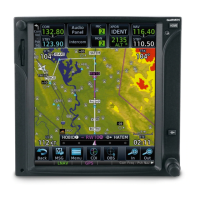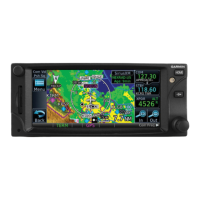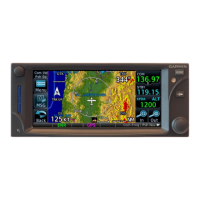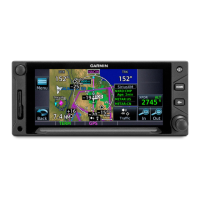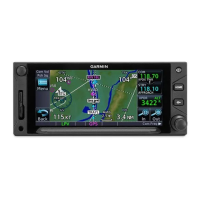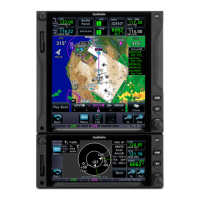12-37190-01007-03 Rev. C
GTN 725/750 Pilot’s Guide
Foreword
Getting
Started
Audio &
Xpdr Ctrl
Com/Nav
FPL
Direct-To
Proc
Charts
Wpt Info
Map
Traffic
Terrain
Weather
Nearest
Services/
Music
Utilities
System
Messages
Symbols
Appendix
Index
Figure 12-47 Angle of Incidence
A smaller incident angle gives the radar a larger detectable range of operation
and the target display will show a higher intensity. Since more radar energy is
reflected back to the antenna with a low incident angle, the resulting detectable
range is increased for mountainous terrain.
12.3.3 Operating Distance
The following information establishes a minimum safe distance from the
antenna for personnel near an operating airborne weather radar. The minimum
safe distance is based upon the FCC’s exposure limit at 9.3 to 9.5 GHz for general
population/uncontrolled environments which is 1 mW/cm
2
. See Advisory
Circular 20-68B for more information on safe distance determination.
12.3.3.1 Maximum Permissible Exposure Level (MPEL) (GWX 68)
The zone in which the radiation level exceeds the US Government standard
of 1 mW/cm
2
, is the semicircular area of at least 11 feet from the 12 inch antenna
as indicated in the illustration below. All personnel must remain outside of this
zone. With a scanning or rotating beam, the averaged power density at the MPEL
boundary is significantly reduced.
12.3.3.2 Maximum Permissible Exposure Level (MPEL) (Other
Radars)
See the appropriate documentation for MPEL.
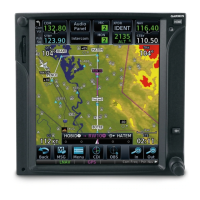
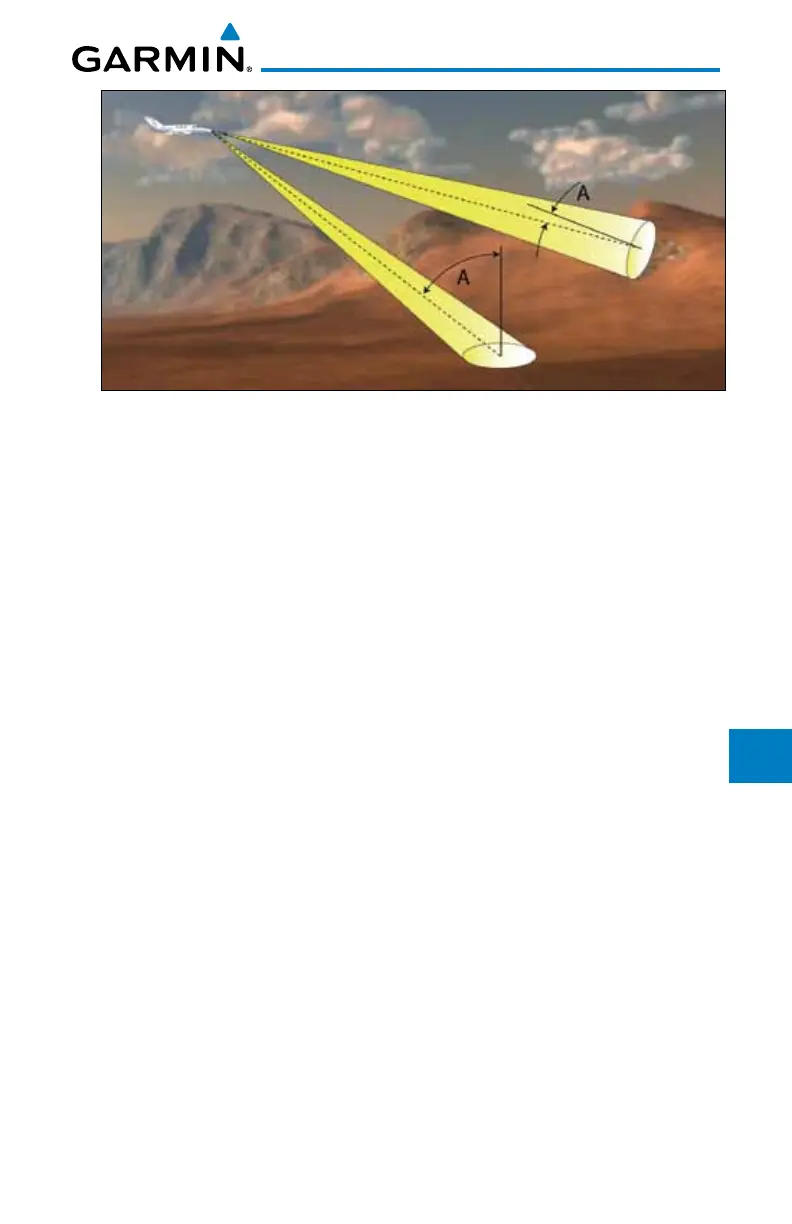